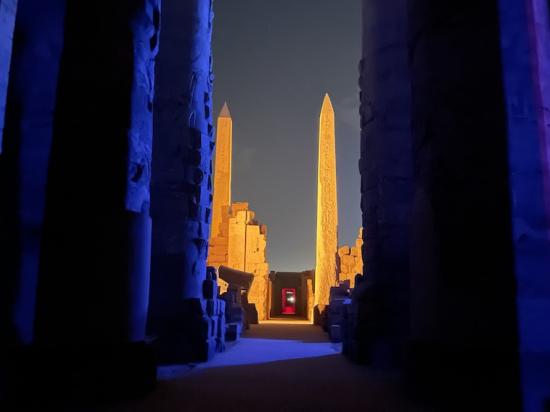The Temple of Karnak
The Temple of Karnak is one of the largest religious complexes in the world and was built over a period of more than 1,500 years, from the Middle Kingdom to the Ptolemaic period.
The temple was dedicated to the god Amun-Ra, his wife Mut, and their son Khonsu. It was a place of pilgrimage and worship, and it was also used for important religious ceremonies and festivals, including the Opet Festival.
Who is Amun now and why you are reading about him rifht now?
Amun was a major god in ancient Egyptian religion. He was often depicted as a man with a ram's head or as a ram, and he was associated with fertility, creation, and the wind. Amun was also sometimes referred to as the "King of the Gods" or the "Hidden One."
Amun was particularly important during the New Kingdom period of ancient Egypt (c. 1550–1070 BCE) when he was elevated to a position of prominence in the national pantheon. He was associated with the pharaoh, and many temples were built in his honor throughout Egypt, with the most famous being the Temple of Karnak in Luxor.
Amun was believed to have created the universe, and he was often associated with the sun god Ra. He was also considered to be a protector of the pharaohs and was believed to grant them power and legitimacy. Many pharaohs adopted the name "Amun" as part of their throne names to associate themselves with the god and his power.
During the reign of Akhenaten, Amun's worship was suppressed in favor of the sun disk god Aten. However, after Akhenaten's death, Amun's worship was reinstated and he remained an important deity in Egyptian religion until the end of the pharaonic period.
After Tutankhamun restored "Maat", meaning order and balance, Amun was again the supreme god and ruled over the Egyptian Pantheon for many hundred years to come. Thebes may have lost its status as the capital of all of Egypt to other cities in Lower Egypt, lie Pi-Ramesse under Ramses II, but it kept its importance as the center of religion in Egypt.
The Temple of Karnak is made up of several buildings, courtyards, and halls, which were built by different pharaohs and rulers over the centuries. The most impressive feature of the temple is the Great Hypostyle Hall, which is a massive hall that contains 134 columns, some of which stand over 23 meters (75 feet) tall. The hall is covered with intricate reliefs and hieroglyphics, depicting scenes from the lives of the gods and the pharaohs.
Other notable features of the temple include the Precinct of Amun-Ra, which is the main sanctuary of the temple, and the Temple of Khonsu, which is dedicated to the son of Amun-Ra. The temple also contains a sacred lake, where the priests performed purification rituals, and a number of smaller temples and shrines.
The whole complexe is one of the most impressive examples of ancient Egyptian architecture and art. Visitors can explore the various buildings and courtyards of the temple complex and admire the intricate reliefs and hieroglyphics that adorn the walls and columns.
I would also recommend to visit the Sound & Light Show at night.






